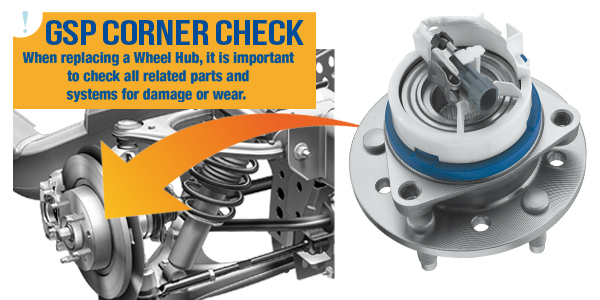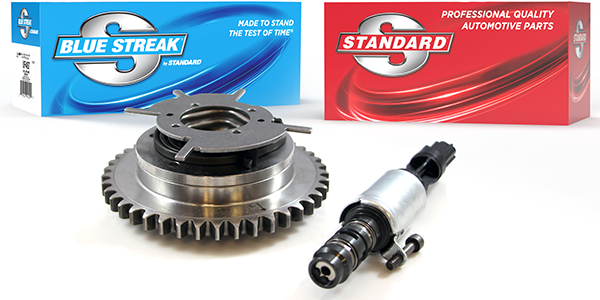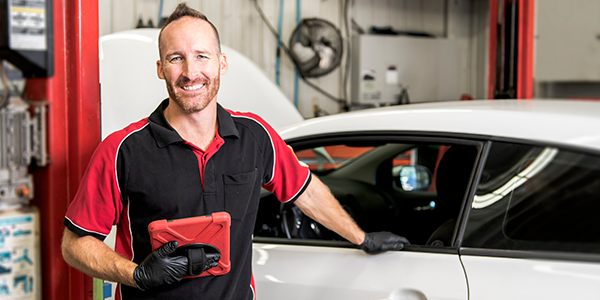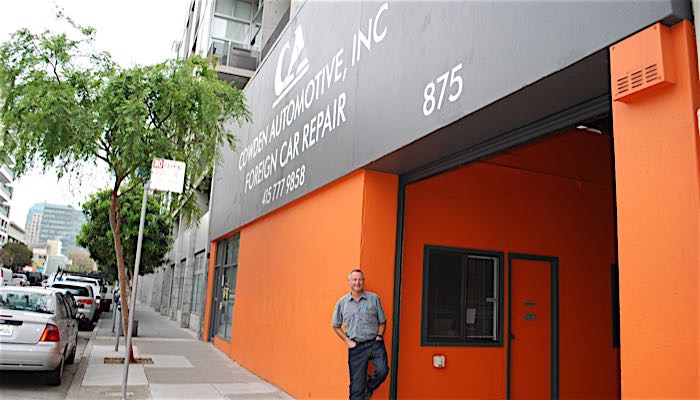Automotive businesses are faced daily with potential risks that can threaten and result in a loss. Slips and falls, employee discrimination, accidental spills and faulty work are just a few examples. As an owner, operator or employee of an automotive business, how do you know which to focus on?
Zurich has compiled the top three areas for concern for three general automotive business department types and suggested loss prevention strategies to address them. Some of these topics were pulled directly from the Occupational Health and Safety Administration’s (OSHA) list of most frequently cited standards for automotive repair shops (October 2008 – September 2009), while others were pulled from Zurich’s claims files and extensive industry experience.
1) Wheel off
This is a completed operations exposure with the potential to cause catastrophic losses. A wheel(s) from a customer vehicle falls off after being serviced at your facility.
• Inspect the studs, wheel and the tire for bead, sidewall or tread damage.
• Implement a formal policy to torque wheels/ lug nuts to manufacturer’s specifications.
• Use a calibrated torque wrench to tighten lug nuts.
• “Double check” or quality control each job.
• If you need help, the Tire Industry Association (TIA) has excellent training programs – visit their website at www.tireindustry.org.
2) Hazard communication standard
This is number one on the OSHA list of most frequently cited standards, also known as the “Right to Know” standard.
• Establish a written Hazard Communication Program including procedures for labeling containers.
• Provide employee training on the program.
• Ensure Material Safety Data Sheets (MSDS) are on hand and available.
• Make sure your employees have been made aware of the hazards.
3) Slips and falls
This is an exposure that can affect both your employees and customers. Slippery floors can result from fluid spills, poor (floor surface) design and many other elements.
• Implement an “aggressive” housekeeping program.
• Keep mops, buckets and “Caution – Wet Floor” signs readily available.
• Use floor care products that are advertised as “slip-resistant.”
• Position rugs or mats at entrances to buildings during inclement weather.
4) Driver hiring, training and monitoring
Parts drivers create a daily accident exposure – this includes property damage and liability from injuring third-parties. Did you know that vehicle accidents are the leading cause of occupational fatalities?
• Implement a formal driver safety program.
• Hold brief but frequent driver safety meetings.
• Require all moving violations to be reported (personal or company vehicles).
5) Lifting, strain, sprain and overexertion injuries
These are the most frequent types of injuries in the parts department. These injuries often result in high-dollar claims and extended time away from work.
• Employ strict hiring procedures including pre-employment drugs screens.
• Provide all necessary mechanical lifting aids – forklifts, pallet jacks, conveyors, etc.
• Caution: OSHA requires employees to be properly trained prior to operating a forklift.
• Train employees on safe lifting techniques.
• Implement a Transition to Work program (also known as “Return to Work”).
6) Fall protection
Fall protection regulations can apply to parts storage areas and order-picking equipment in addition to alignment or quick-lube pits in the service department.
• Install handrails, mid-rails and toe boards in mezzanine areas.
• Order-pickers that elevate employees in order to reach high storage areas must be equipped with fall protection that includes a fall arrest or “positioning system” system.
• Full body harnesses are required for fall arrest systems; belts cannot be used for any vertical free fall protection.
7) Eye protection
Eye injuries are generally minor in nature. However, frequency can be a big problem. Productivity can be cut substantially by employees who have to go to a first aid clinic to have debris removed from their eyes.
• OSHA requires the employer to assess the workplace to determine if hazards are present, or are likely to be present, which necessitates the use of Personal Protective Equipment (PPE).
• Provide safety glasses and enforce their use, i.e. air chisels, grinders, buffing, etc.
• Employees should wear full face shields when using parts washers.
8) Fire prevention and protection
Fires have the potential to kill and injure employees, not to mention put you out of business. Where do your customers go while you rebuild? Market share and customers lost to the competition are tough to recoup or win back.
• Disconnect batteries on all vehicles stored inside the building to reduce the possibility of an electrical “short” starting a fire.
• Obtain and use gas caddies/buggies for gasoline handling.
For questions about this loss prevention topic or any of Zurich’s products or services, visit www.zurichna.com/zdu.





